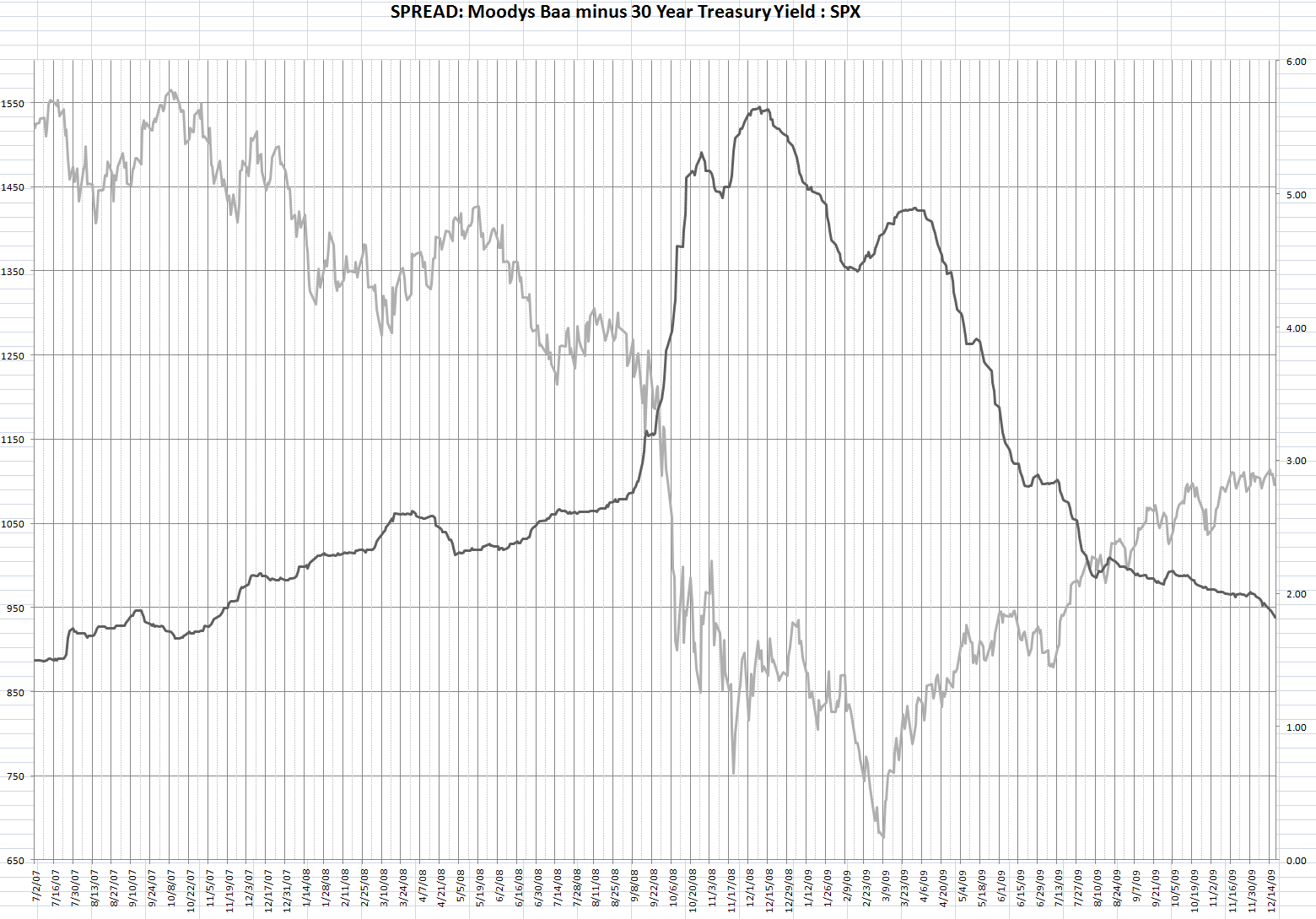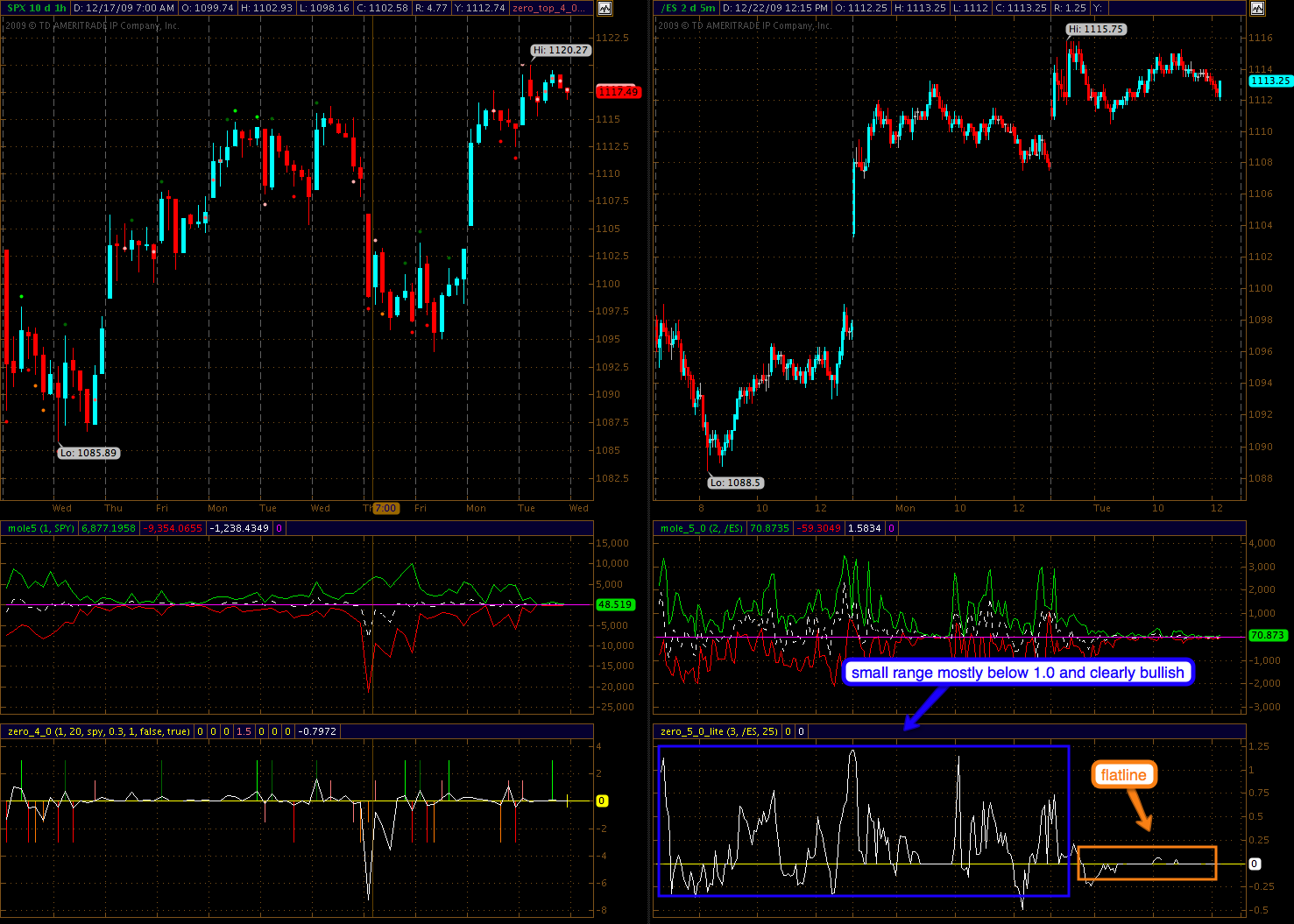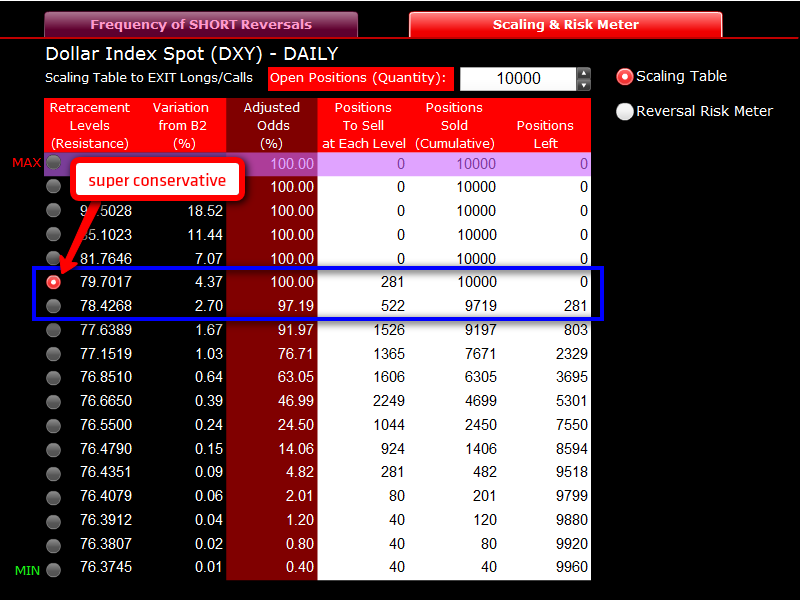Risk Is Still In
Risk Is Still In
My apologies for the lack and brevity of posts in the past two weeks but on top of X-Mas preparations I am also trying to get ready for CES in early January where my second company will introduce a very exciting entertainment based consumer product. So I’m basically burning the candle on both ends and unfortunately I am forced to cut down on my posts. Which does not seem to matter that much anyway as traffic has slowly diminished in the past 10 days or so – and the tape is admittedly annoying at best.
Last night I however managed to take an hour to update my BAA-TYX chart – again, this is something I have to do manually and it takes a while as I’m inputting three different data sets into various spread sheets which produce the plot above. The effort is however very much worth the time as it gives us an insight into the appetite for risk among market participants. And that seems to be growing as we are now have clearly dipped below the 2% mark and are at 1.9% on the 10-day MA.
For the noobs: Bonds are generally classified into two groups – “investment grade” bonds and “junk” bonds. Investment grade bonds include those assigned to the top four quality categories by either Standard & Poor’s (AAA, AA, A, BBB) or Moody’s (Aaa, Aa, A, Baa).
The term “junk” is reserved for all bonds with Standard & Poor’s ratings below BBB and/or Moody’s ratings below Baa. Investment grade bonds are generally legal for purchase by banks; junk bonds are not.
The specific definitions assigned to junk bond ratings by the services help define the magnitude of the risk associated with them. Because Standard & Poor’s definitions are somewhat more comprehensive, they are quoted here:
BB, B, CCC, CC, C: Debt rated BB, B, CCC, CC, and C is regarded, on balance, as predominantly speculative with respect to capacity to pay interest and repay principal in accordance with the terms of the obligation. BB indicates the lowest degree of speculation and C the highest degree of speculation. While such debt will likely have some quality and protective characteristics, these are outweighed by large uncertainties or major risk exposures to adverse conditions.
BB: Debt rated BB has less near-term vulnerability to default than other speculative issues. However, it faces major ongoing uncertainties or exposure to adverse business, financial, or economic conditions which could lead to inadequate capacity to meet timely interest and principal payments.
B: Debt rated B has a greater vulnerability to default but currently has the capacity to meet interest payments and principal repayments. Adverse business, financial, or economic conditions will likely impair capacity or willingness to pay interest and repay principal.
Because a B rating is the single most common rating found in a junk bond portfolio, Moody’s definition of its B rating follows:
Bonds which are rated B generally lack characteristics of the desirable investment. Assurance of interest and principal payments or of maintenance of other terms of the contract over any long period of time may be small.
To resume with Standard & Poor’s:
CCC: Debt rated CCC has a currently identifiable vulnerability to default, and is dependent upon favorable business, financial, and economic conditions to meet timely payment of interest and repayment of principal. In the event of adverse business, financial, or economic conditions, it is not likely to have the capacity to pay interest and repay principal.
D: Debt rated D is in payment default.
So, how does that fit into the big picture? The BAA-TYX chart measures the yield spread between bonds rated one step above junk versus the yield of the supposedly most reliable and safe bond there is, the U.S. 30-year treasury bond. In the past it has been observed that a narrowing of the spread often precedes a rise in equities and inversely that a widening of the spread may be a sign of trouble ahead. Is a big drop in equities always preceded by a widening of the BAA-TYX spread? Well – sometimes it is – but if you parse through this chart you’ll also notice that it doesn’t always pan out this way and that it sometimes lags behind a little. Still, it’s something we want to be on the lookout for in case it does occur. On the up side I have never observed a extensive narrowing of the spread that was followed by a prolonged drop in equities (Intermediate degree or higher) – and inversely I don’t recall a significant widening of the spread that was followed by a prolonged bullish cycle.
What’s notable right now, today, is that we are now approaching lows not seen since the very top of the 2007 peak, at which time the BAA-TYX spread was actually still narrowing. We did not observe a widening of the spread until about after Minor 1 of Intermediate (1) of Primary {1} of cycle wave c. Which means the very first drop followed by a snap back.
So, if you count yourself a ‘lazy bear’ that has learned various lessons from trying to call a top throughout 2009, then this is the indicator you might want to keep in mind. Because as it looks right now – we most likely won’t see a widening of this spread until a ‘reset’ forces investors to re-evaluate their risk appetite and to move their cash into safer assets.
Nothing new in regards to the wave count – we have been pushing up to complete this expanding triangle, just as I thought we would. 1030 most likely awaits – especially considering this:
The Zero Lite has been flat to begin with, although the prior spikes look large bear in mind that they are mostly within the 1.0 range. On the bearish side we never dropped below 0.25, thus this tape is clearly bullish and either nobody is daring to short this tape or has left for the holidays. Also notice that we’ve gone completely flatline today, which is symptomatic of pre-X-Mas action. Do yourself a favor and take the next week or two off – come back in early January and reassess where we stand then.
That’s pretty much all I have for now. On the Dollar front I am still waiting for a reversal at the 78.42 retracement level. The high of today? 78.45 – not bad at all. Many thanks again to 2sweeties over at retracementlevels.com for donating this wonderful tool to us on an exclusive basis.
House Cleaning Items:
I’m going to be very sporadic in my postings for the remainder of 2009 – there will probably only one more before Christmas and then perhaps one before the end of the year. In the interim I might put a comment cleaner here and there unless gmak or Michael decide to put up something they just can’t wait to share with you rats
Starting January 6th I’m going to be at CES until the 10th, thus there will be no posts during that time frame either. Sorry guys – this will be an important time for me and I hope that I won’t miss out on any exciting tape.
Cheers,
Mole




















